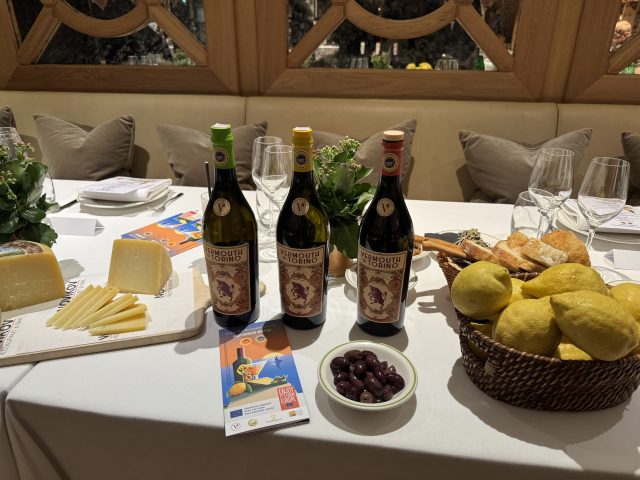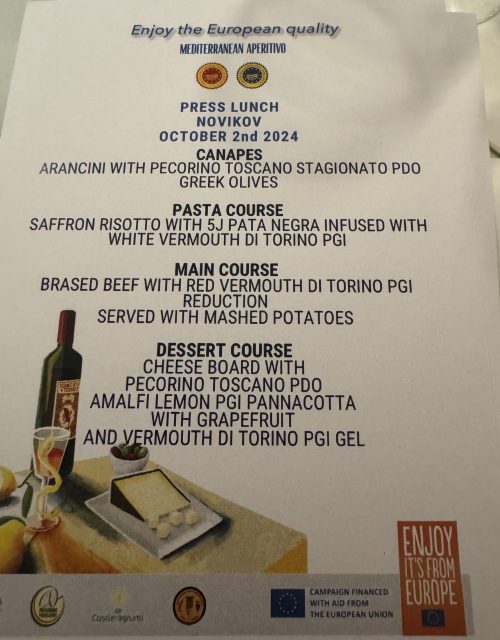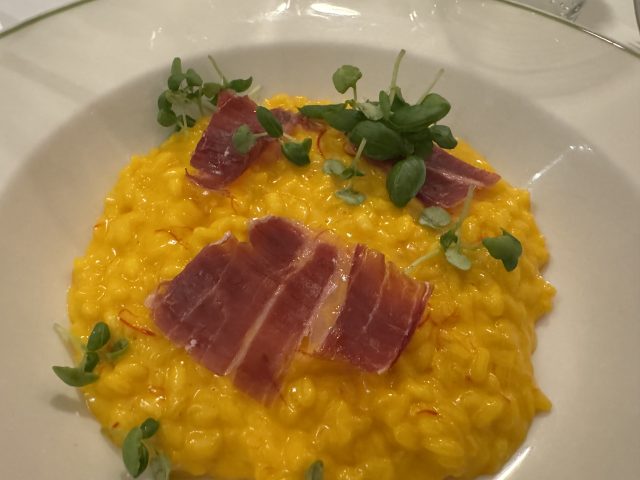This website uses cookies so that we can provide you with the best user experience possible. Cookie information is stored in your browser and performs functions such as recognising you when you return to our website and helping our team to understand which sections of the website you find most interesting and useful.
Why vermouth isn’t just for aperitivo hour
Though widely used as a component in a pre-meal drink, vermouth can also be a versatile match for a number of dishes. Louis Thomas takes a look at how food pairings can change perceptions of this aromatised, fortified wine.

Although the lunch held at Novikov on Berkeley Street last week was to promote the Mediterranean Aperitivo campaign, what emerged from it is that Vermouth di Torino, the aromatised wine from Piemonte, is also more than capable of holding its own when served alongside a multi-course meal.
“We were going to do a press conference, but having a drink and lunch with you is much better,” remarked Roberto Bava, managing director of Cocchi and president of the Consorzio del Vermouth di Torino. “Vermouth, in spite of being born in Piemonte 300 years ago, is a recent story…we are one of the youngest consorzi promoting one of the oldest products.”
Indeed, the Consorzio del Vermouth di Torino was founded in 2019 and now contains almost 50 members. Last year it achieved trademark certification in the US after a three year campaign.
“You have witnessed the renaissance of gin and mezcal, but vermouth is there too – using good wine to make good vermouth,” Bava continued. “It used to be a volume product, but now there’s a new style of drinking it and barmen can show their skills in a different way. It’s like how chefs in the 70s used plastic mozzarella for Caprese salad, but now they use delicious burrata!”
Ingredients certainly matter. The Mediterranean Aperitivo campaign puts the vermouth alongside Amalfi lemons PGI, Greek olives and Pecorino Toscano PDO, in what might be described as an unconventional Italo-Hellenic union.
The menu of Italian-inspired dishes was served alongside Vermouth di Torino cocktails made by famed bartender (not ‘mixologist’, as he pointed out) Brian Silva, a Bostonian previously of Balthazar and now at Rules.
“The Americans will drink a cocktail through a meal, whereas the British won’t,” Silva shared. Given that vermouth is a wine product, and we Brits have no reservations about having wine with dinner, perhaps cocktails made with it are the secret to changing this attitude.
Sommelier selection
Andrea Rinaldi, president of the UK Sommelier Association, offered the drinks business his insights as a somm into how to approach pairing vermouth with food: “We have different types of vermouth: extra dry, dry white, rosé and red. The technique for tasting and pairing vermouth is the same as for any other type of wine. All types of vermouth prefer dishes with good aroma, spiciness, length, juiciness, softness, that are rich in flavour and have a sweet tendency.”
The base wine for Vermouth di Torino must also be made from at least 50% Piemontese-grown grapes.

“Cheese-based dishes are ideal for pairing with Dry and White Vermouth. The White Vermouth also pairs well with fruit desserts, creamy and white chocolate. Red Vermouth instead goes well with meat dishes and it is excellent with chocolate desserts.”
“For bar men, the Extra Dry is the liquid for a Martini, like James Bond,” said Bava. “You can almost drink Extra Dry Vermouth di Torino like it’s a Vermentino when it’s chilled – with oysters and prawns.”
“We’re not encouraging you to stop drinking wine,” added Bava, whose family estate also produces wines from Langhe and Monferrato.
“In my opinion all the pairings were very good,” Rinaldi shared, “however, the Rosa Spritz [Vermouth di Torino Bianco, gin, lemon juice and soda] with the saffron risotto infused with White Vermouth di Torino and served with pata negra was quite interesting because the sweet tendency, creaminess and aroma of the dish married well with the freshness, flavour, effervescence and aromas of the cocktail.”

Indeed, because Vermouth di Torino is both flavoured and fortified, it is useful to have a bottle on hand in the kitchen to cook with.
“Remember that vermouth leaves a bitter tail on the palate because of its botanicals, including Artemisia [such as wormwood], especially when it is concentrated through cooking,” warned Bava. “But it offers an intriguing opportunity to bring out flavours.”
Another course that made use of it as an ingredient was braised beef served with a Red Vermouth di Torino reduction, which was intense, sweet, and, due to the botanicals used to flavour it, slightly herbaceous. This rich dish was served alongside Silva’s suitably strong Gin & That, which combines the juniper-flavoured spirit with Vermouth di Torino Rosso and citrus.
Though the Gin & That felt suitably alcoholic, giving it a heft that could complement the red meat, the vermouth could still be tasted, and Silva suggested that a good measure of aromatised wine is no bad thing in many cocktails – indeed, he lamented those who omit it altogether from certain classics.
“Some people still commit the crime against nature of not adding vermouth to their Martinis, maybe they just want vodka. In the US, the new way to have a Martini is 50/50, so it’s much less flammable, and you can have two.”
Bava’s parting advice was a reminder that, though firmly in its own category, a bottle vermouth should be treated with the same respect as a bottle of wine: “Keep your vermouth in the fridge! If you don’t don’t drink a bottle in a month you are sick!”
Though the lunch menu was suitably Southern European, some vermouth brands are eager to show the drink’s potential beyond dishes from this part of the world, with Cocchi teaming up with Sri Lankan restaurant Hoppers last year.
Related news
Simon Rogan to reopen Hong Kong restaurant

